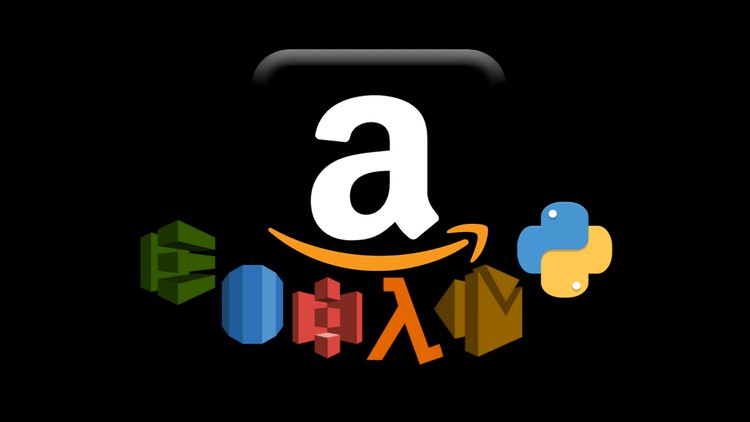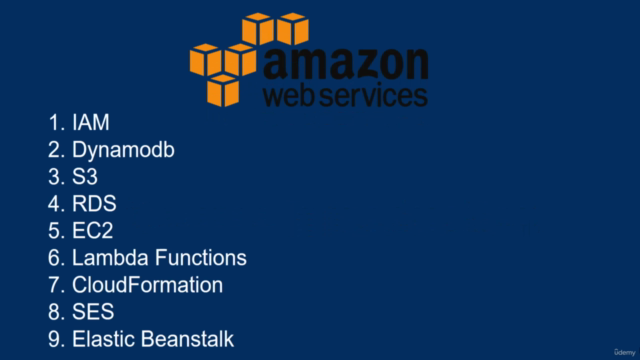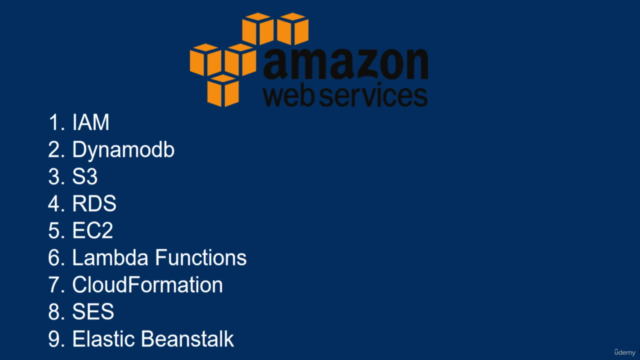Amazon Web Services (AWS) with Python & Boto3

Why take this course?
🌟 Master Amazon Web Services (AWS) with Python & Boto3: Build & Deploy Real-World Projects 🌟
🚀 About the Course:
In this comprehensive course, we dive into the world of Amazon Web Services (AWS) and its seamless integration with Python, utilizing the powerful Boto3 library. AWS is a robust cloud platform that offers over 200 services to millions of customers globally. By the end of this course, you'll not only understand the core AWS services but also be able to implement them in your Python web projects.
🧠 What is Python? Python is a versatile and beginner-friendly programming language known for its readability and simplicity. It allows developers to write clear, logical code for applications ranging from simple scripts to large-scale systems. With its clean syntax and powerful libraries, Python is an excellent choice for working with AWS services.
📚 Course Structure: This course is meticulously structured into nine comprehensive sections:
-
IAM (Identity and Access Management): We kick off by understanding how to manage access to AWS services, creating examples in the AWS console, and then exploring IAM with Python.
-
DynamoDB: Learn about Amazon's fully managed NoSQL database service that provides fast and predictable performance without worrying about hardware or software overhead.
-
Amazon S3 (Simple Storage Service): Discover how to store and retrieve any amount of data at any time, with the high durability, availability, and security features of S3.
-
Amazon RDS (Relational Database Service): Dive into three major relational databases – MySQL, Postgres, and Mariadb – and their integration with Python, enabling robust database solutions for your applications.
-
Amazon EC2 (Elastic Compute Cloud): Understand how to launch and manage virtual servers in the cloud, deploy a Django project, and manage its lifecycle on EC2 instances.
-
AWS Lambda: Explore serverless computing by creating functions that run in response to events and automatically manage the underlying compute resources for you.
-
AWS CloudFormation: Model your cloud infrastructure using code with JSON or YAML, automating the deployment of your AWS resources in a reliable way.
-
Amazon SES (Simple Email Service): Learn how to send transactional and marketing emails reliably and at scale using Amazon SES.
-
Elastic Beanstalk: Deploy web applications and services written in various languages, including Python, with ease, and enhance your Django project by integrating RDS functionalities before deploying it.
-
Practical Blog Project with Python & Django: Create a fully functional blog application with Amazon RDS, deploy it to Elastic Beanstalk, and then customize your project with a domain from Amazon Route 53 and secure it using AWS Certificate Manager (SSL).
-
Practical Blog Project with Python & Flask using AWS CodePipeline: Focus on integrating a Python Flask application with AWS services, including setting up a continuous delivery pipeline with AWS CodePipeline to deploy your project seamlessly.
🛠️ What Will You Achieve? By the end of this course, you will have:
- Gained hands-on experience with core AWS services and how they can be orchestrated from within a Python application.
- Developed real-world projects including a blog platform and a Flask web app, both deployed in the cloud using AWS infrastructure services.
- Understood how to automate deployments using AWS CodePipeline.
- Learned how to manage AWS resources efficiently through infrastructure as code (IaC).
- Acquired skills to secure and scale your applications on the cloud with best practices in mind.
🎓 Whether you're a Python developer looking to expand your skillset or an AWS enthusiast ready to dive into Python, this course offers valuable insights and practical experience that will help you leverage the full potential of cloud computing with AWS. Join us on this exciting journey and transform your coding skills! 🚀
Course Gallery




Loading charts...